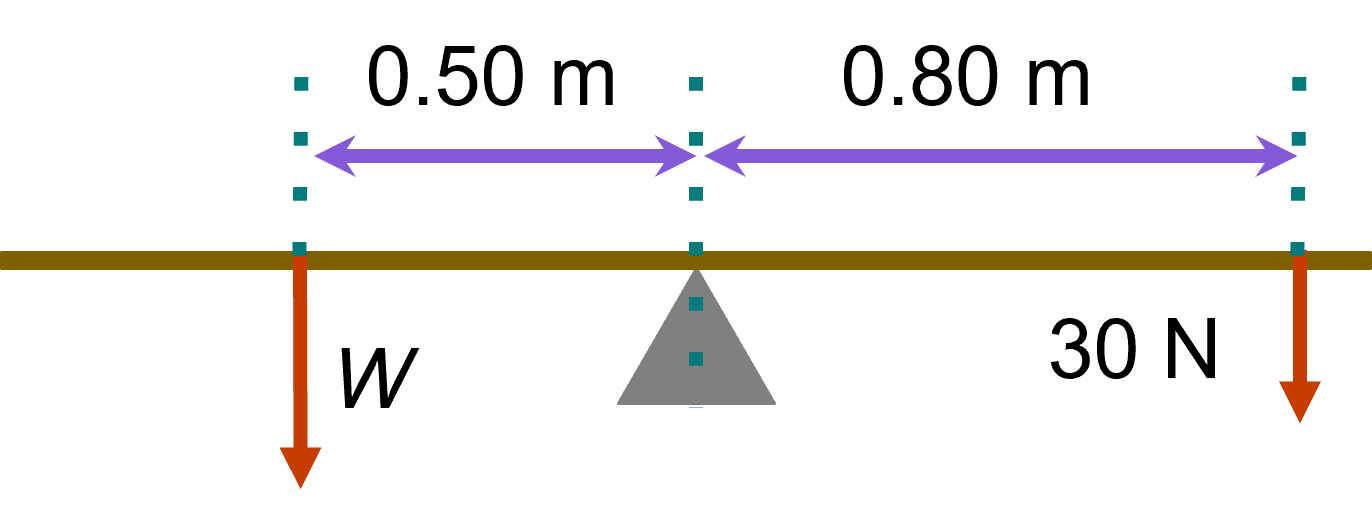Myths about teaching can hold you back


- Year 11•
- AQA•
- Higher
Balancing
I can investigate the conditions for balance and apply the principle of moments in a range of situations.


- Year 11•
- AQA•
- Higher
Balancing
I can investigate the conditions for balance and apply the principle of moments in a range of situations.
These resources were made for remote use during the pandemic, not classroom teaching.
Switch to our new teaching resources now - designed by teachers and leading subject experts, and tested in classrooms.
Lesson details
Key learning points
- Moment = force × distance (M = Fd)
- If an object is balanced, the total clockwise moment about a pivot equals the total anticlockwise moment.
- An object is in equilibrium if it is balanced and there are no resultant forces acting.
Keywords
Equilibrium - The state of an object when there is no resultant force or moment acting on it.
Moment - The turning effect of a force, measured in newton metres (Nm).
Principle of moments - An object will balance when the clockwise moments are equal to the anticlockwise moments.
Common misconception
The distance to a pivot is always the distance along the lever, no matter which direction the force is acting in.
Opening a door by pushing on the handle in different directions shows it is harder to open when the shoulder of the person pushing is closer to the pivot (smaller perpendicular distance between the force and the pivot).
To help you plan your year 11 physics lesson on: Balancing, download all teaching resources for free and adapt to suit your pupils' needs...
To help you plan your year 11 physics lesson on: Balancing, download all teaching resources for free and adapt to suit your pupils' needs.
The starter quiz will activate and check your pupils' prior knowledge, with versions available both with and without answers in PDF format.
We use learning cycles to break down learning into key concepts or ideas linked to the learning outcome. Each learning cycle features explanations with checks for understanding and practice tasks with feedback. All of this is found in our slide decks, ready for you to download and edit. The practice tasks are also available as printable worksheets and some lessons have additional materials with extra material you might need for teaching the lesson.
The assessment exit quiz will test your pupils' understanding of the key learning points.
Our video is a tool for planning, showing how other teachers might teach the lesson, offering helpful tips, modelled explanations and inspiration for your own delivery in the classroom. Plus, you can set it as homework or revision for pupils and keep their learning on track by sharing an online pupil version of this lesson.
Explore more key stage 4 physics lessons from the Forces make things change unit, dive into the full secondary physics curriculum, or learn more about lesson planning.

Content guidance
- Risk assessment required - equipment
Supervision
Adult supervision required
Licence
Prior knowledge starter quiz
6 Questions
Q1.Which of the following statements about moments is correct?
Q2.A force of 40 N acts at a distance of 10 m normal to a pivot. The moment produced by the force is Nm.
Q3.A moment of 50 Nm is produced by a force of 20 N. The perpendicular distance between the direction of the force and the pivot is m.
Q4.A moment of 300 Nm is produced by a force acting at a distance of 50 cm from a pivot. The magnitude of the force is N.
Q5.Which of the following statements for an object with no resultant force or moments acting on it are correct?
Q6.The diagram shows a metre rule of weight 5 N balanced on a support. Two objects, of weight 2 N each, are placed on it as shown. What is the size of the upwards force labelled $$R$$?
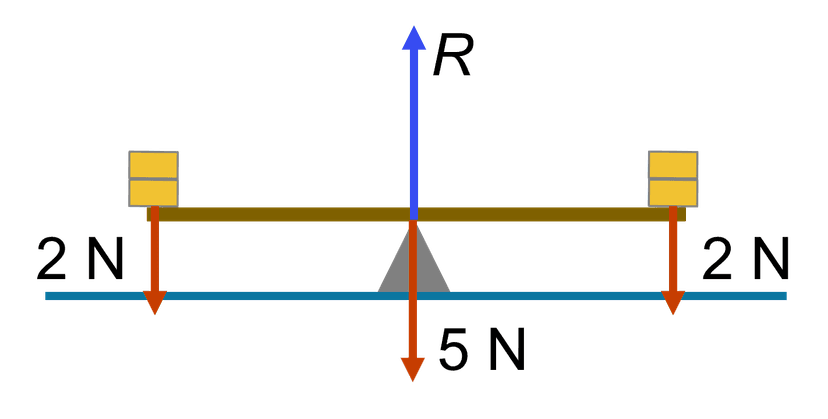
Assessment exit quiz
6 Questions
Q1.Which of the following statements describes the principle of moments?
Q2.The diagram shows a balance beam in equilibrium. There are four forces acting on it: $$F_1$$, $$F_2$$, $$W$$ and $$R$$.
Which of the following statements are correct?
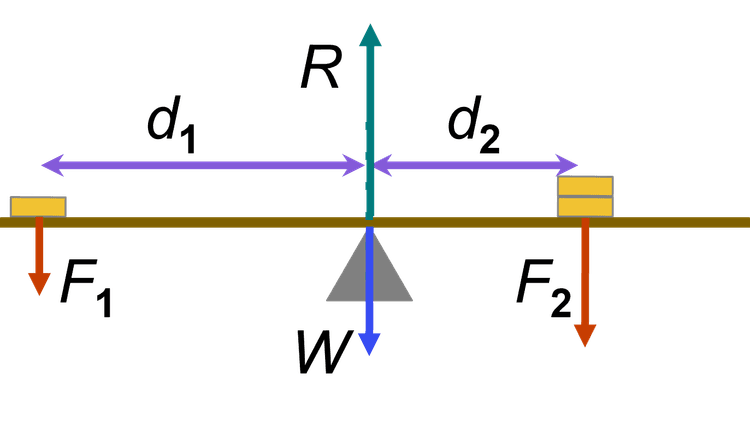
Q3.A pupil has two masses, labelled X and Y. One of the masses is twice as heavy as the other. The pupil places the masses on a balance beam, as shown. Which of the following statements are correct?
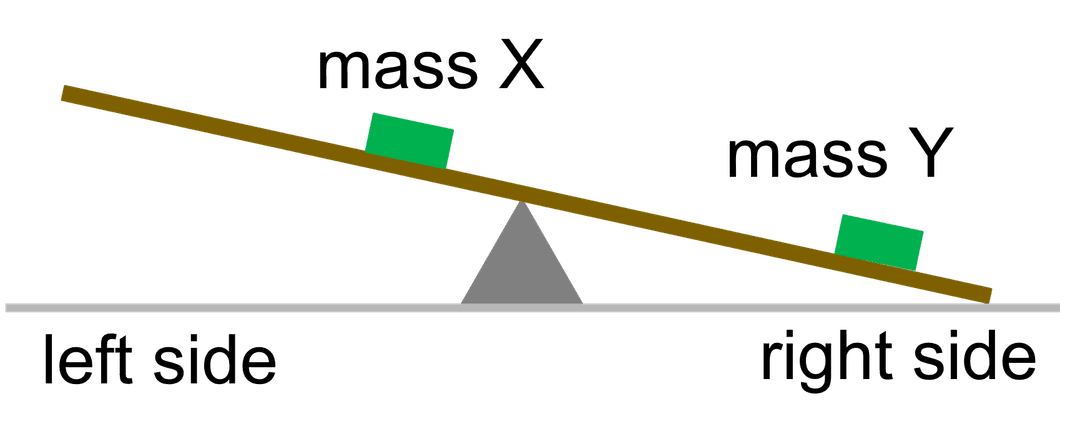
Q4.The diagram shows a beam with three forces acting on it. Which of the following statements are correct?
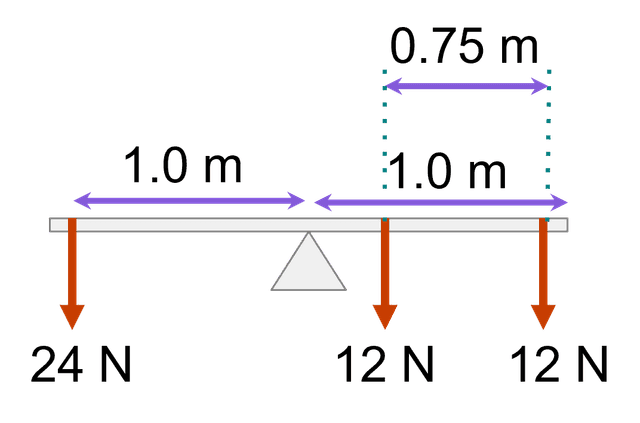
Q5.The beam shown in the diagram is balanced. What is the distance $$x$$?
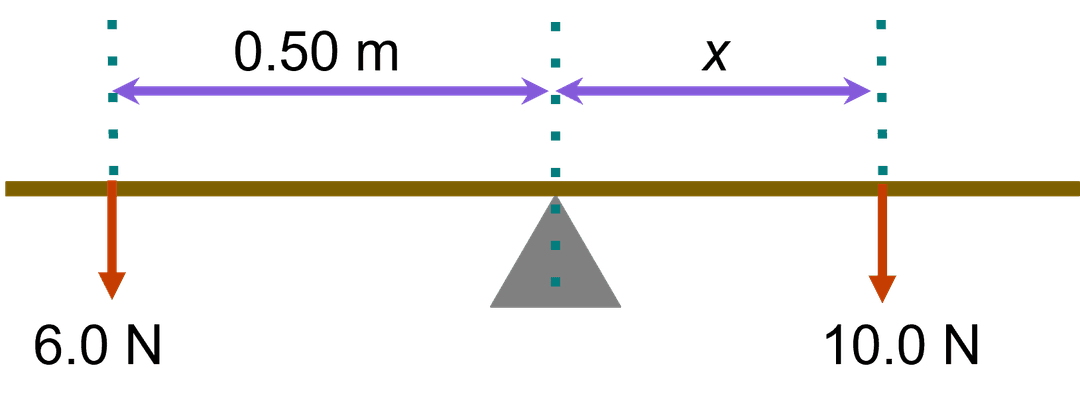
Q6.The beam shown in the diagram is balanced. What is the size of the force $$W$$?
